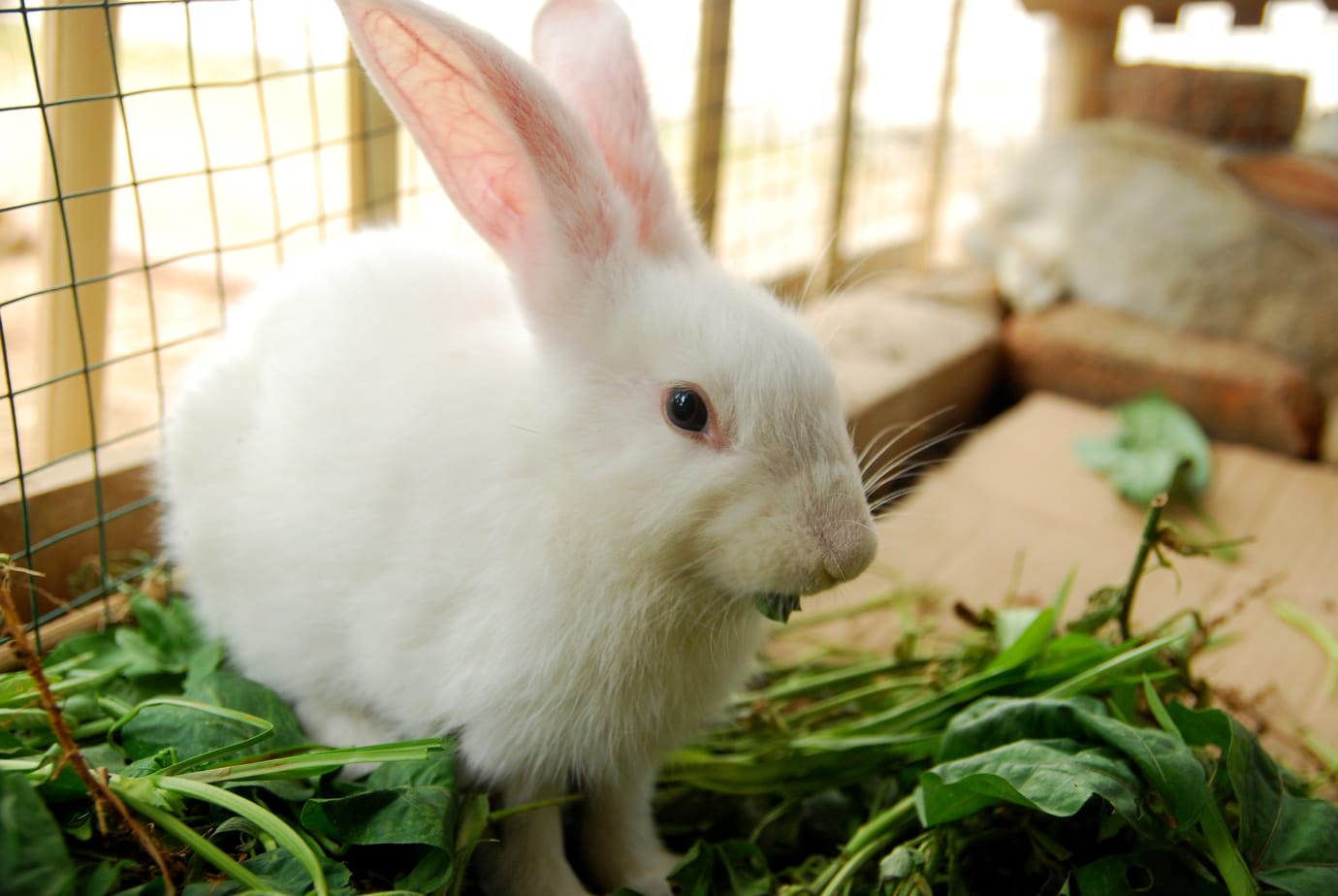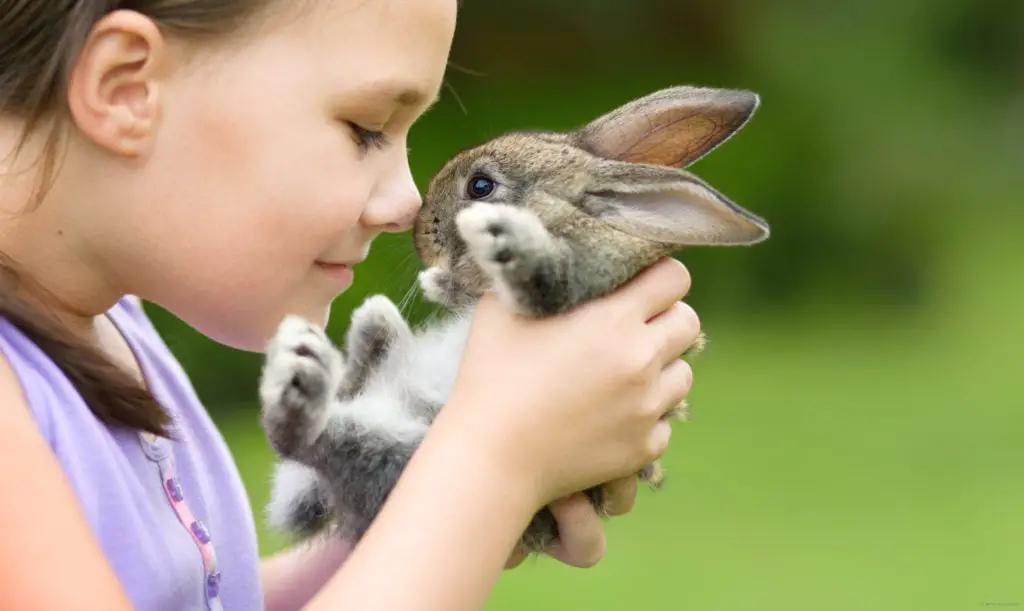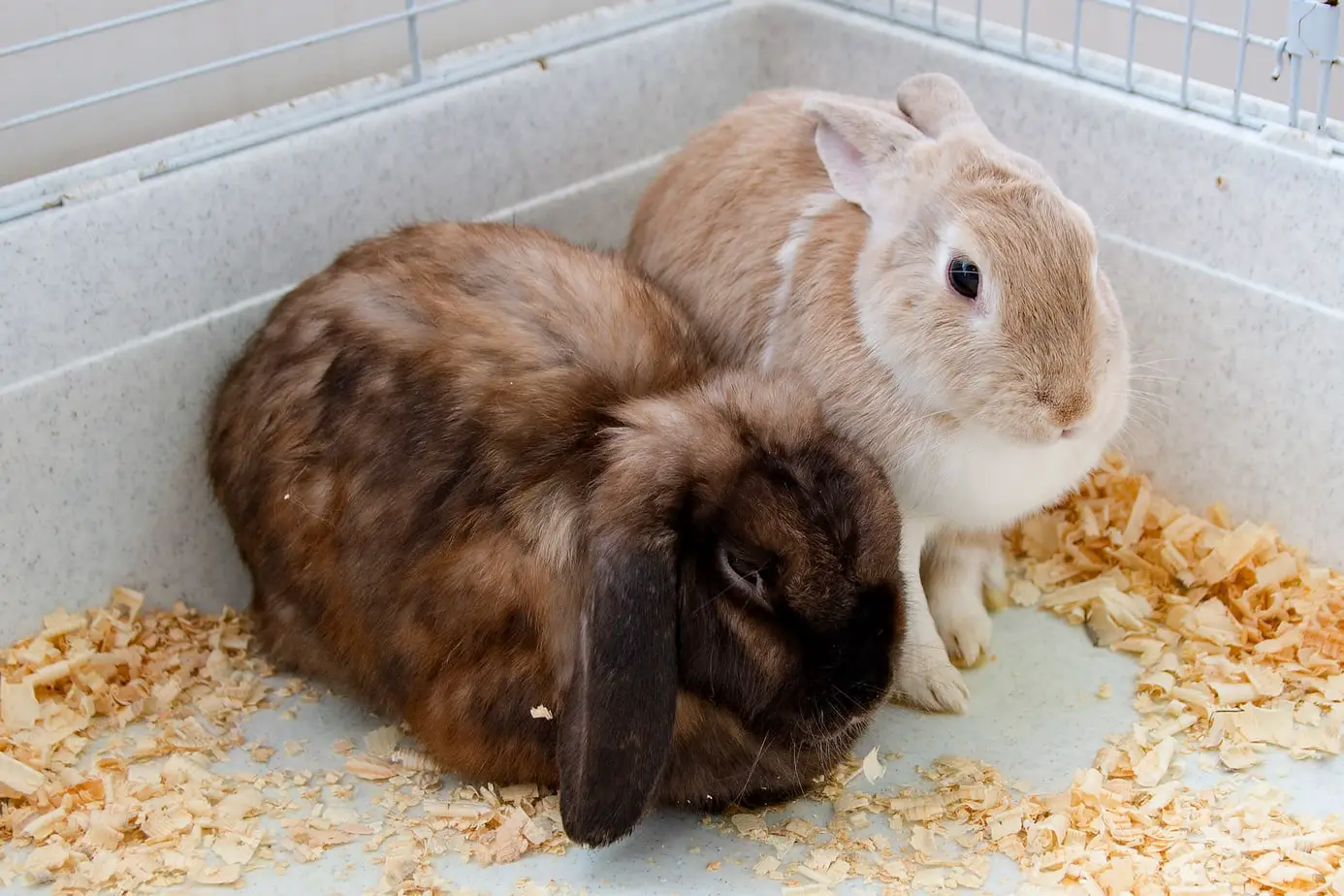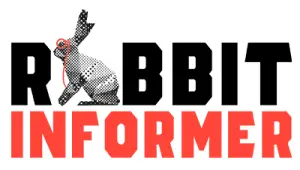
Many people believe rabbits are cute, docile creatures, so it can come as a surprise when they hear their rabbit begin to growl. Fortunately, this isn’t an abnormal noise, and there’s likely an explanation as to why your rabbit is growling.
Rabbits growl to signal aggression, annoyance, or stress. The reasons for growling can vary, but you will want to locate the source of their defensive behavior to make them more comfortable. Above all, it’s important to be mindful of your rabbit during your approach.
Here are some answers to help pinpoint your rabbit’s aggression and remedy it, which will create a stronger bond between you and your pet.
Crossing Into Their Territory
Rabbits can be territorial, so if you accidentally cross into its personal space when it doesn’t want you to, it will likely growl to make its frustration known.
Instead of forcing your rabbit out of its place, like its cage, allow it to grow comfortable enough to move freely in your home or area by leaving the cage door open. When it’s out of its cage, then you can clean their space up, change the water, or replenish its food.
Be sure to familiarize yourself with its territorial zones. That way, you can avoid spaces where your rabbit doesn’t want you to go, and find areas where it can be comfortable with your presence. These compromises will make your rabbit feel more secure and feel less defensive.
If you’ve tried everything and your rabbit still displays territorial behavior, it might be good to consider spaying or neutering them. Springtime is a rabbit’s natural breeding season, so their hormones may enhance their aggression when it comes to protecting their spaces. If you want to see how bad it can get with these hormones and what to do about it, see my article Are Pregnant Rabbits Aggressive? What to Know.
Rabbits reach sexual maturity around four to six months old, which is an ideal time to set up an appointment. If your rabbit is older and you wish to go through with spaying or neutering, a procedure is still possible and advisable.
Being Touched or Held Too Long

As much as you may want to cuddle your rabbit because it’s so adorable and soft, it has boundaries and limits that might be different from another rabbit’s preferences. Don’t force your rabbit into uncomfortable situations by holding or petting it more than it wants.
The less you crowd your rabbit with physical gestures, the more comfortable it will become, and the less you will have to worry about aggressive behavior. Though it might pain you to avoid over-cuddling your rabbit, respect its likes and dislikes when it comes to touching.
If you’re not sure how to spend time with your rabbit through other means of affection, remember that rabbits like to play and socialize. Offer it treats, teach it to do tricks, or just allow it to find a medium where you can both enjoy each other’s company without any discomfort. For a lot of other good ideas, see my article all about how to show a rabbit affection here.
Reacting to Their Owner’s Body Language
Rabbits may show aggression toward you if you’re not conscious of how you physically present yourself. They may see you as a threat if you approach them in an imposing manner.
To help your rabbit be less afraid, lie on your stomach or in a non-threatening position. It’ll help if you also have rabbit-friendly food to coax it into a more relaxed and trusting state. It may take time for you to establish an environment where your rabbits feel safe around you, so be patient while it adjusts.
Don’t rush anything; otherwise, you may set back the relationship with your rabbit and further aggravate it.
As you do these exercises to develop trust with your rabbit and show it that you’re not a threat, be sure to observe your rabbit’s body language in response to your own. That way, you can identify what you do or don’t want to do to prevent an aggressive reaction.
Remember, rabbits are little animals in a big world. Make yourself smaller, and it will understand that you don’t pose any danger. To find out a lot more about how rabbit’s communicate so you can tell what your rabbit is really feeling, see my article Rabbit Language: 27 Ways Bunnies Communicate.
Exhibiting Stress in Their Environment
Rabbits are naturally anxious animals. That’s how their species have stayed alive. But due to their easily panicked state, multiple factors can trigger a defensive response. Luckily, many of these responses are avoidable if you take a bit of extra care.

Rabbits do better if they have a companion. Bonding with other rabbits is an instinctive response because they “have each other’s backs.” If you can afford the additional space, time, and affection, getting a buddy for your bunny will alleviate any stress it might have from being alone. In certain circumstances, two rabbits can even be happy sharing the same cage. My article all about multiple rabbits sharing a single cage will give you ideas on how you can share a cage successfully.
Avoid loud noises when your rabbit is nearby. Whether this means you have to keep your voice lowered or turn the volume down, your rabbit will thank you. While you don’t need to have a completely silent household, you should be careful as to what may scare your rabbit and set off an aggressive response.
Nobody wants to have a cramped living space, rabbits included. They need a large enclosure to feel comfortable and get exercise.
Many rabbit cages are much too small, however, which will amplify their stress levels and lead to negative behavior. Rabbit pens are optimal enclosures because they provide space for roaming while keeping your rabbit from getting into places they shouldn’t.
Along with adequate room, your rabbit will also need a place or two to hide. If they don’t have direct access to a hiding spot, they’ll feel like they don’t have anywhere to escape and may lash out. Provide your rabbit with something as simple as an overturned cardboard box or a hide-out-bed to give it the safety it wants.
Rabbits are prone to overheating, so their discomfort can cause them anger or stress. To help your rabbit’s temperature, try:
- Air conditioning if temperatures are in mid-seventies or higher
- Trimming excess rabbit fur
- Applying a cool damp cloth to your rabbit’s ears
- Keeping water supply cold
- Keeping a frozen water bottle in their enclosure
DID YOU KNOW? Rabbits use their ears to help them regulate body temperature. Therefore you can tell a lot about your rabbit’s health based on just their ears! Learn more in my article about how a rabbit’s warm ears could indicate if he’s sick here.
If your rabbit doesn’t have enough toys to channel its energy, it may become unhappy. Be sure it has plenty of toys to chew on and play with. Otherwise, a bored rabbit may become an aggressive rabbit.
Lastly, simply give time for your rabbit to trust you. Don’t add on any undue stress. Establishing a connection over time will result in a happier rabbit and a happier owner.
